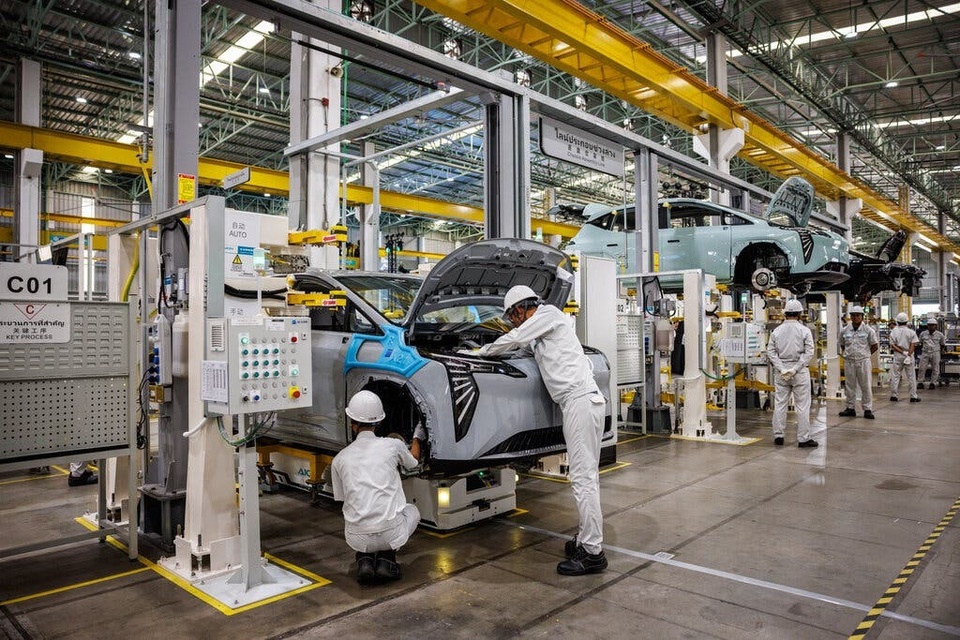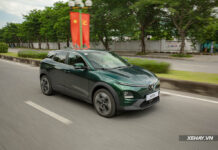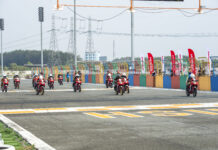
|
|
Image: The New York Times. |
Thailand was once dubbed the “Detroit of Asia,” being the largest automotive manufacturer in Southeast Asia and ranking 12th in the world for domestic car production, according to CNN in 2018.
However, recent developments suggest that the region’s automotive hub is undergoing a shift. Thailand and Indonesia’s once-dominant positions are now challenged by the rising automotive industries in Malaysia and Vietnam.
A Cooling “Detroit of Asia”
In 2002, the Thailand Automotive Institute announced a six-year plan to transform the country into the “Detroit of Asia,” aiming to attract most global automakers to set up factories in the country.
Coupled with high tariffs on automobiles and motorcycles, which have been in effect for over three decades, Thailand’s domestic car production witnessed an impressive growth of 383% between 2000 and 2017.
Data collected by the ASEAN Automotive Federation (AAF) reveals that Thailand’s car production from 2015 to 2023 fluctuated but never fell below 1.4 million vehicles per year. The industry peaked in 2018, with a total of 2,167,694 cars rolling out of domestic assembly lines.
In the same year, Indonesia manufactured 1.3 million cars, while Malaysia and Vietnam produced 564,971 and 200,436 cars, respectively.
|
|
|
Inside the Nissan factory in Thailand. Image: Nissan. |
Many automakers chose Thailand as their regional production base. In 2018, renowned car manufacturers with factories in the country included Ford, General Motors, BMW, Mitsubishi, Mazda, Toyota, Isuzu, Nissan, Honda, and Suzuki.
With the surge in electric vehicle popularity, Thailand also attracted the attention of Chinese automakers. BYD, Aion, Great Wall Motors, Neta, and Chery are among those that have already established or are preparing to set up production facilities in the country.
Hyundai, a South Korean automaker, is also reportedly investing $28 million to build an electric vehicle factory in the Southeast Asian nation.
However, Thailand’s domestic automotive production has shown signs of decline since last year. According to AAF, as of November 2024, Thailand’s car production decreased by 20.1% year-on-year, reaching 1,363,623 vehicles, possibly the lowest in a decade.
| Thailand’s automotive industry shows signs of decline | |||||||||||
| Thailand’s domestic car production from 2015 to 2024 (Data: AAF) | |||||||||||
| Label | 2015 | 2016 | 2017 | 2018 | 2019 | 2020 | 2021 | 2022 | 2023 | Jan-Nov 2024 | |
| cars | 1,913,002 | 1,944,417 | 1,988,823 | 2,167,694 | 2,013,710 | 1,427,074 | 1,685,705 | 1,883,515 | 1,834,986 | 1,363,623 |
The 20.1% gap compared to the same period in 2023 is not the most significant decline in the region. Indonesia experienced a more substantial drop of 31.8% during the same period, with domestic car production reaching 885,516 vehicles.
Meanwhile, Malaysia was the rare exception in the region, witnessing a growth in domestic car production, reaching 725,173 vehicles in the first 11 months of 2024.
Vietnam also saw a slight decrease of 1% in the same period, producing 157,115 cars. In 2023, Vietnamese assembly lines completed a total of 177,115 automobiles.
The Region’s Automotive Hub is Transforming
The shift in the region’s automotive hub is reflected in the number of cars Vietnam imports from other Southeast Asian countries.
In 2023, Thailand was the largest source of imported cars to Vietnam, with a total of 53,942 vehicles, followed by Indonesia, which exported 42,676 cars to the Vietnamese market.
In 2024, however, Indonesia surpassed Thailand as the leading provider of imported cars to Vietnam. While Thailand exported 63,769 cars, Indonesia shipped 70,728 vehicles to Vietnam, reflecting a growth in Indonesia’s exports to the country.
|
|
|
Thailand is no longer the largest exporter of cars to Vietnam. Image: T.T. |
According to The Bangkok Post, Thailand’s automotive industry experienced its 17th consecutive month of decline in late 2024, mainly due to weak domestic and overseas demand.
The country’s car exports decreased by 8.8% in the same year, and sales also dropped by 26% compared to the previous year.
Additionally, Japanese automakers Suzuki, Honda, and Subaru confirmed plans to scale down or transition their production operations in Thailand during 2024.
As per The Bangkok Post, Suzuki’s factory in Thailand will close by the end of 2025, and Honda’s plant in Ayutthaya is also expected to cease operations soon.
Subaru, on the other hand, will gradually phase out its vehicle assembly in Thailand. From 2025 onwards, markets that consume Subaru cars assembled in Thailand will transition to importing fully-built cars from Japan.
|
|
|
Subaru’s factory in Thailand will soon close. Image: Phúc Hậu. |
Chinese electric vehicle manufacturers continue to invest in Thailand. Data from the Electric Vehicle Association of Thailand (EVAT) indicates that BYD, Great Wall Motors, and other Chinese automakers have collectively invested over 102.7 billion baht (approximately $3 billion) in the country.
However, recent developments suggest that Thailand and Indonesia’s once-dominant positions may be challenged as international automakers seek alternative locations for their factories. Malaysia and, potentially, Vietnam are emerging as new investment hotspots for these companies.
Can Vietnam Become the New Automotive Hub?
In addition to established automakers in Vietnam, such as VinFast, Toyota, Hyundai, Ford, Mitsubishi, Mazda, Kia, Peugeot, MINI, BMW, and Mercedes, the country is also attracting new entrants like Omoda, Jaecoo (Chery), Lynk & Co, Geely (Geely Group), Tank, and Haval (Great Wall Motors).
Chery, in particular, has identified Vietnam and Malaysia as key destinations in its global factory network. The Chinese automotive group even considers Vietnam as the main production hub for the Southeast Asian region.
|
|
|
Chery’s planned factory layout in Thai Binh. Image: Chery. |
In October 2024, Hyundai Thành Công announced the export of the fourth batch of Hyundai Palisade SUVs to Thailand, bringing the total number of Palisade exports to 110 vehicles.
Before Hyundai, companies like VinFast and Thaco had also exported vehicles to Southeast Asian countries and even further to markets like the US and Canada.
Vietnam’s automotive industry, though relatively young and dependent on the development of supporting industries, holds potential to become a new production center in the Southeast Asian region.
Of course, Vietnam will not be alone in this journey. Indonesia and Malaysia also have certain advantages that make them attractive destinations for major automotive brands. The competition to become the region’s automotive hub is still ongoing, and the future holds promise for the development of the automotive industry in Southeast Asia.
Recommended Reads for Your Journey
Our Automotive section offers a diverse range of book recommendations to engage your mind during your travels. Whether you’re on a long road trip or waiting for your next destination, these books will keep you entertained and informed.







































